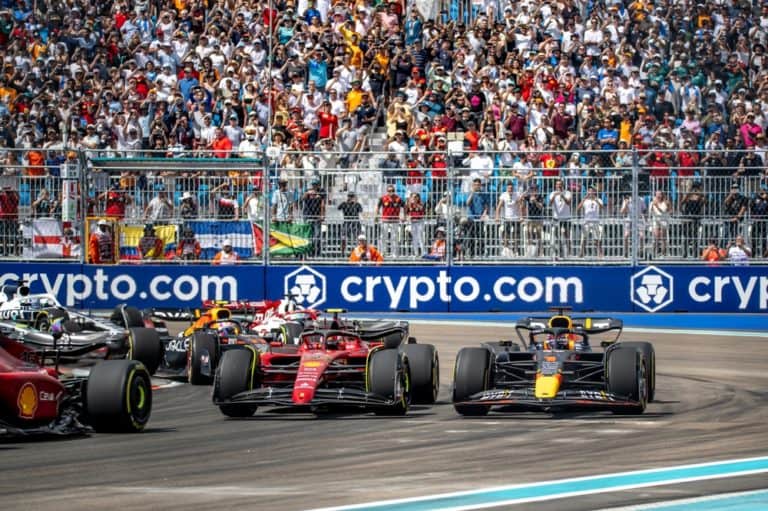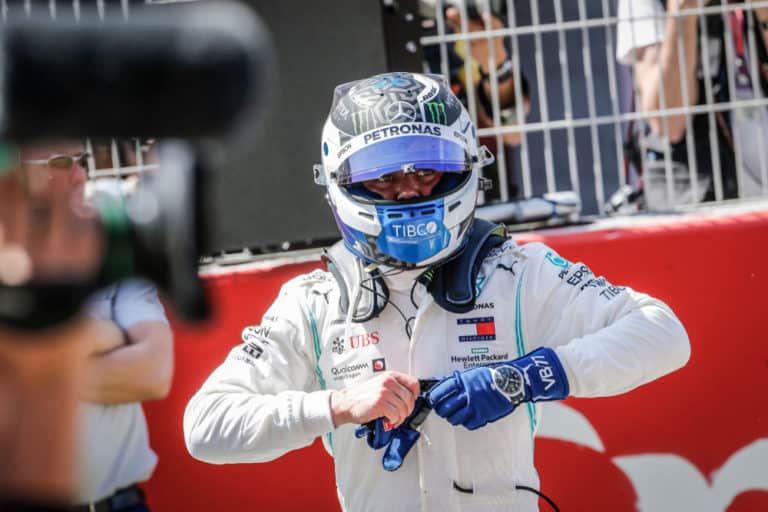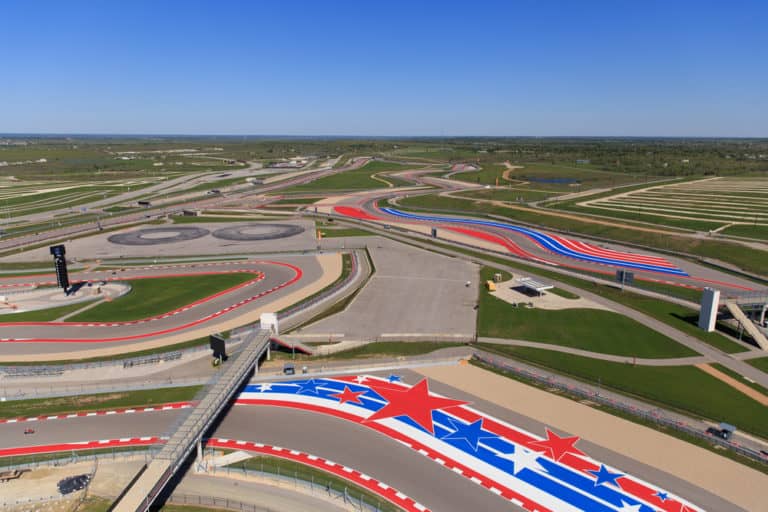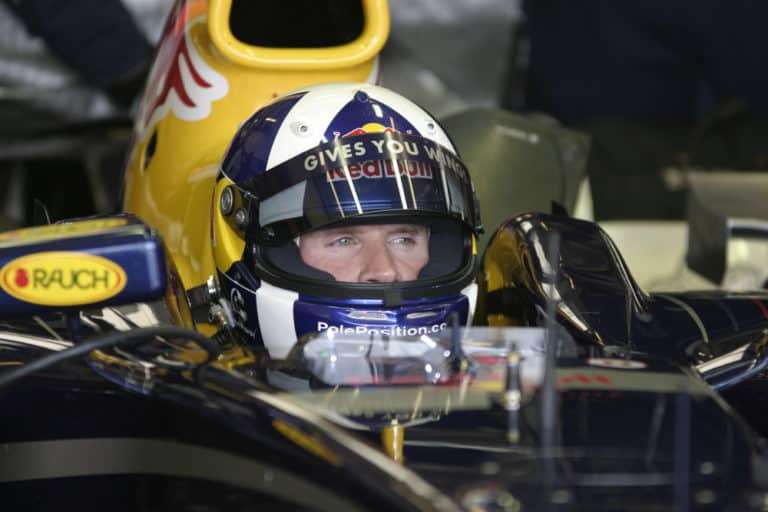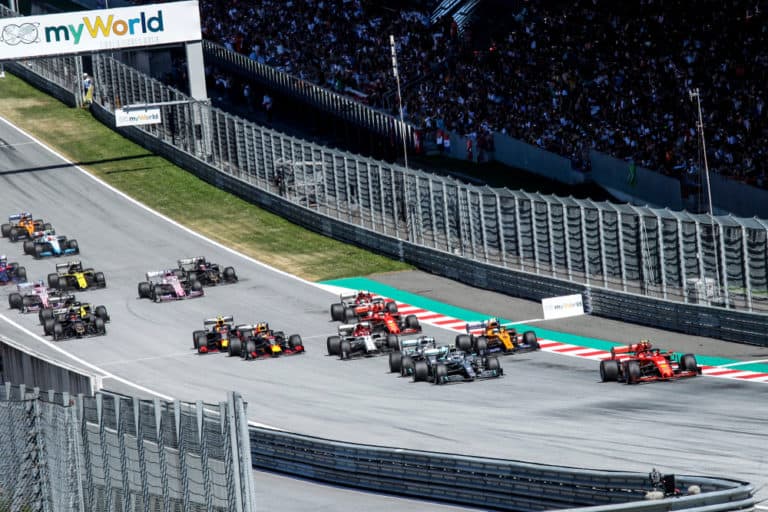Editorial credit: Sergey Kohl / Shutterstock.com
Formula 1 is one of those activities where winning is everything. Everyone who follows this motorsport is familiar with the names of the drivers. After all, they tend to appear on the podium several times during any season.
Few casual observers, however, will appreciate that there is an entire team of very important role players in the background that make this happen.
Formula 1 engineering greats list is as long as the drivers who have taken championship glory. Some of the most notable ones include Colin Chapman, Adrian Newey, Mauro Forghieri, Gordon Murray, Rory Byrne, John Barnard, Andy Cowell, John Cooper, Sir Patrick Head, and Aldo Costa.
The case for F1 engineering is wide-ranging. Activities include race engineering, design, and data analysis, amongst others. But what are the foundations required to enter the exciting world of F1 motorsport, and which ones are the best amongst the best?
In this article, we list the engineers who have made the greatest contributions to F1 in the history of the sport.
If you’re looking for some F1 merchandise, check out the awesome stuff at the official F1 store here.
F1 Engineering, A Careful Juggling Act
Undeniably, the drivers are the “fighter aces” of F1 motorsport. Young, daring, and talented, they grace our TV screens every fortnight, battling for the ultimate prize of a podium finish.
Yes, drivers win races, yet there is an entire team of engineers and mechanics that ensure performance consistency, and the entire technical crew ultimately wins championships.
With a huge emphasis on safety, engineers are constantly juggling ideas on the best way to improve performance, reliability, and safety, striving to make their cars the quickest around the track without compromising on reliability while ensuring the safety of the drivers responsible for testing these machines to their limits.
What Do F1 Engineers Do?
On every race day, there are approximately 15 to 20 engineers at the track. This figure, however, represents only a fraction of the people involved in the background.
Raceday engineers assume their positions based on their functions, with some buzzing around in the garage and others on the pit wall, involved with the racing sessions. They usually all congregate for meetings only.
The guys seen sitting abreast at the wall talking into their headsets and watching events on digital monitors are the pit engineers, and they are responsible for what happens to both cars on the track. The garage-based engineers usually look after one of the two team cars.
The team’s sporting director sits on the left side of the pit wall and is responsible for FIA regulations compliance. They also liaise with the overall F1 race director, decides on pit stop strategy along with the chief team strategist, and lead the pit crew involved with tire changes.
The trackside engineer’s unenviable role is to push the cars to their maximum performance. Working with both cars, they coordinate with all the engineers in the garage and those in the factory where the F1 cars are built and tested. The information garnered from any of the cars will be used to improve the performance of the other.
In the middle of the pit wall sits the technical director, whose function is to control the entire operation from the garage and track to the factory. Running around between these locations is why the technical director is not always seen on race day.
Besides these critical roles, several other important functions occupied by suitably qualified engineers include race, performance, controls and engine performance, and systems engineering, amongst others.
Most of these engineers and technical staff are equipped with a bachelors or master’s degree in mechanical or automotive systems engineering and an intense apprenticeship.
10 Best Engineers Of All Time
A career in F1 engineering involves many years of formal education and training and a steely determination to find positions in this exciting sport. While there is a long list of great engineers in F1 history, here are a few worthy of making this list.
1. Colin Chapman
Colin Chapman reportedly said: “A racing car has one objective only, winning races. If it can’t do this it’s nothing but a waste of time, effort, and money.” That pretty much sums it all up.
Chapman understood the power-weight dynamics and worked tirelessly to revolutionize the approach to weight reduction in cars.
With a hugely successful career with the Lotus team through the 1960s and 1970s, Chapman was instrumental in the development of stressed monocoques, sidepods, suspension struts, and innovations in ground effect aerodynamics and team sponsorships. Chapman’s contributions helped Lotus win titles with Graham Hill, Jim Clark, Mario Andretti, and Jochen Rindt.
2. Adrian Newey
One of the most successful race engineers, this designer, and technical director with an illustrious F1 and IndyCar career spanning over four decades and winning 185 Grand Prix, Adrian Newey is an F1 legend.
His designs have been adopted by no less than three championship-winning teams, namely Williams, McLaren, and Red Bull Racing.
He graduated from Southampton University with degrees in Aeronautics and Astronautics in 1980, despite having been booted out of school earlier. He started his career in F1 with the Fittipaldi team before embarking on the rest of his career, which involved spectacular, innovative designs in Aerodynamics.
Along with Patrick Head at Williams, Newey won five titles before joining McLaren and taking another one. Newey is currently with Red Bull Racing along with team principal and former racing driver Christian Horner.
Since joining Red Bull in 2006 Red Bull have taken four constructors titles with driver Sebastian Vettel and seem on track to win another in 2022 with Max Verstappen.
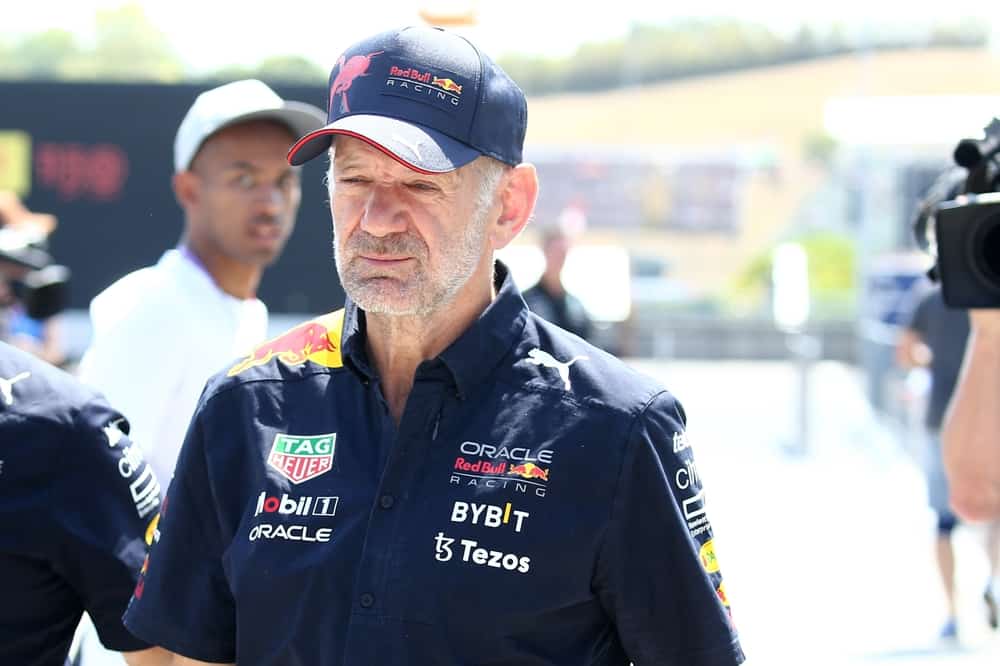
3. Mauro Forghieri
Mauro Forghieri, born in Modena, Italy, the town that also gave birth to the iconic Ferrari brand, was a mechanical engineering graduate from the University of Bologna before embarking on his F1 career with an apprenticeship at Ferrari.
Engine development being his forte, Forghieri was instrumental in the development of the first turbocharged engine for the Scuderia Ferrari cars, seemingly giving them an unfair advantage. He was also the brainchild behind the transverse gearbox, which was later adopted by the entire F1 lineup.
In part and thanks to the driving skills of Jody Scheckter and Niki Lauda, Forghieri’s efforts helped Ferrari wrestle their way back to the podium after a decade of dominance of McLaren, Brabham, Lotus, and Tyrrell.
Today, Forghieri plies his trade at Oral Engineering Group, a company he co-founded.
4. Gordon Murray
A South African native born to Scottish parents, Murray designed and built his own car, the IGM Ford, and raced it in the SA National Class in 1967 and 1968.
His mechanical engineering qualifications took him to England the following year, where he found himself working for Brabham. Bernie Ecclestone, seeing Murray’s talents, appointed him Chief Designer.
Innovative and bold, his eccentric approach to racing car design eventually led him to design the radical Brabham “Fan” car. Ingenious in concept, the BT46B’s fan attached to the car’s rear produced immense downforce, drawing air out from beneath the car.
It was withdrawn after one race by Ecclestone for reasons later attributed to his own F1 political ambitions.
Murray helped Brabham achieve two titles before he joined McLaren-Honda and, along with fellow designers Neil Oatley and Steve Nichols, led them to success in the late 1980s. He left F1 in 1991 and these days is involved in lightweight auto design through his Gordon Murray design consultancy.
5. Rory Byrne
Another South African native, this quiet, unassuming chemist by trade is credited with membership in the iconic “Schumacher Dream Team” of the early 2000s.
At the age of 33, Byrne started his F1 journey with Toleman in the late 1970s after establishing himself firmly in British motorsport circles.
Taking his first win in 1986 with Gerhard Berger at Benetton, Byrne ended up with racing boss Ross Brawn and Michael Schumacher and ended up following the German driver to Scuderia Ferrari. At Ferrari, Byrne designed five world championship cars for Schumacher.
Back at Ferrari after being wood out from semi-retirement in Thailand, Rory Byrne is currently a technical adviser for the 2022 season, with Charles LeClerc’s performance proving that this investment in Rory Byrne has so far not been a waste.
Reputedly drawing inspiration for his designs while shaving; hopefully, this will be a good year for the talented South African.
6. Ross Brawn
Few F1 enthusiasts would claim to have never heard of Ross Brawn. In his role as technical director and taking Benetton and Ferrari to multiple winning performances, this British legend is known as the “mastermind” that took Michael Schumacher to seven world championships.
After his successful stints at Ferrari and Benetton, Brawn joined Honda as Team Principal. After Honda’s withdrawal from F1 in 2008, Brawn bought a 51% stake in the team and rebranded as Brawn GP before being bought out themselves in 2009 by Mercedes.
After a successful four-year stint at Mercedes, Ross Brawn retired at the end of the 2013 season, but not before he was awarded an OBE (Officer of the Order of Britain) in 2010 for his contributions to the world of motorsport. These days Brawn is MD, Motor Sports, and technical director for the Formula One Group.
7. John Cooper
John Cooper, a recipient of the CBE, was one of the most prolific car makers in the history of motorsport and helped Britain to retain dominance in F1 from its formative years. His idea to put the engine in the back of the car radically changed the approach to F1 car design permanently.
Enzo Ferrari, seeing the “odd” looking Cooper-Bristol T40 with its engine in the rear in the 1955 British Grand Prix, remarked, “A horse doesn’t push the cart with its nose.” He would later concede, forced to eat his words.
The Brabham team would eventually go on to win the constructors championships in 1959 and 1960. The following year all F1 cars came out with engines in the back.
Cooper was to make an impact on the passenger car industry too. In 1961, John Cooper was given free rein to tweak the performance of Morris’s 1959 original rendition of the popular Mini. He made the engine more powerful, added bigger brakes, and tuned it up a bit. This gave birth to the Classic Mini Cooper 997, and the legend endures until today. Cooper died in 1977.
8. Patrick Head
Another British great, Sir Patrick Head, is best known for co-founding the Williams team along with Frank Williams and dedicated 27 years of his life to leading the engineering team to success.
Williams quickly won titles twice within three years of its inception and increased the tally from the late 1980s and onwards.
With 113 wins, seven driver’s and nine constructor’s championship titles to his credit, Head’s sterling career saw him help build one of the most successful F1 teams in history.
Many other F1 engineering legends worked under the stewardship of Patrick Head, including Adrian Newey, Ross Brawn, Neil Oatley, Paddy Lowe, and Enrique Scabaloni.
The 1990s saw Williams dominate the winner’s podium before the Ferrari/Schumacher spectacle took over the reins in the early 2000s. The departure of Adrian Newey saw the Williams star wane, and Head himself resigned from Williams in 2012.
Receiving a knighthood in 2015, Head now occupies a consultancy role at Williams Racing. His loyalties remain unquestionable.
9. Andy Cowell
With an acute understanding of engine dynamics, this mechanical engineer’s contributions to engine design in general and Mercedes, in particular, are profound.
Through his development of the V6 hybrid power units, Mercedes have managed to collect six double title wins for Mercedes since 2014, an enviable tally.
To put it in plain terms, Mercedes, under his engine management, have seen them dominate like no other team in F1 history. His other achievements include race-winning engine designs for Cosworth and the BMW that won four victories for Williams in 2001.
10. Aldo Costa
This list of engineering greats would not be complete without the inclusion of Aldo Costa. A title winner with Mercedes and Ferrari, this Italian, hailing from Parma, Italy, and a graduate from the University of Bologna, earned his stripes focusing on suspensions at Minardi before joining Scuderia Ferrari in 1995.
As a protégé to Rory Byrne at Ferrari, Costa headed design and development before taking on the technical director role. He found limited success and left to join Mercedes in 2011 and led the design of the W04 Mercedes F1 series, which has dominated F1 podiums for the past seven years.
Conclusion
The list of best engineers in F1 history is long, and the criteria required to make this list are equally so. One thing is certain: those who do make it into the annals of Formula One engineering greats deserve the accolades wholeheartedly. As much as is the case for F1 drivers, the engineers who get into F1 have to give it their all with true grit and are certainly the cream of the crop.
References
- https://en.wikipedia.org/wiki/Adrian_Newey
- https://www.quora.com/Who-are-some-of-the-best-engineers-team-principals-and-other-members-of-all-time-in-Formula-1
- https://racingnews365.com/the-25-most-influential-people-in-formula-1
- https://www.formula1.com/en/latest/article.vote-now-who-is-the-most-influential-technical-innovator-in-f1-history.dUby3oyTgDmCPqkvkYttX.html
- https://www.redbull.com/za-en/f1-best-designers-in-history
- https://www.youtube.com/watch?v=Vu6n8XIEPN8
- https://www.mercedesamgf1.com/en/news/2018/11/insight-the-trackside-engineers/
- https://en.wikipedia.org/wiki/Ross_Brawn#Honda_(2008)
- https://www.miniusa.com/why-mini/why-mini/over-60-years-of-motoring.html
- https://en.wikipedia.org/wiki/Patrick_Head
- https://en.wikipedia.org/wiki/Andy_Cowell

